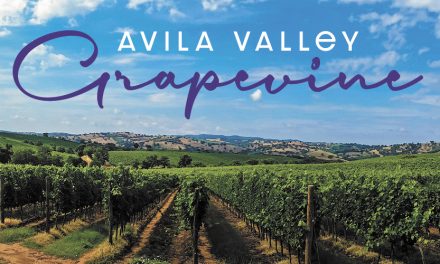By DR. CINDY MAYNARD
Back when I taught nutrition classes, I would typically end my class, asking the participants to set a goal for the upcoming week. Responses would range from “I’m going to lose weight” to “exercise more” or “eat more nutritiously.” Occasionally there was a person who said, “I’m going to eat fast food twice a week instead of five times a week.” Who do you think was the more successful person? You got it—the fast-food person. The reason is, he set a very specific goal that he was able to achieve. The person who “wanted to exercise more” got overwhelmed and easily gave up.
This is the time of year when people set New Year Resolutions. Interestingly, only about 8 percent actually achieve their goals. Here are the top 6 reasons why people don’t reach their goals:
- The goal is too vague or too large
- Procrastination
- Easily distracted
- Lack of motivation
- Lack of planning
- Not making time to incorporate the new goal into life
So, what defines a successful goal and one that is doomed to fail? If you’ve set goals before and gave up, try SMART goals— they might just be your key to success.
How to Set a SMART Goal
S= Specific. Make your goal specific. For example, rather than saying you want to add more fruits and vegetables to your diet, specify you will add 1 more cup of fruit and vegetables to your diet daily. Or perhaps you want to try meditation. How will you do this? What steps do you need to take? Get as specific as possible.
M= Measurable. Measure your progress along the way. One good way to do this is by keeping a graph or journal. A couple of years ago, I made the decision to add more protein to my diet since I was over-compensating with carbohydrates. I kept a daily journal of how many grams of protein/day I was getting. It helped keep me accountable and made it easier to track my progress.
A= Achievable. Ask yourself if your goal is achievable. If you’ve never run before, a goal of running a marathon in 3 months may not be realistic. Rather, you may find you have the resources and ability to start out with a 20-minute walking program. This goal will challenge you rather than defeat you.
R= Relevant. Is the goal worthwhile, and will it meet your needs? For a person who just experienced cardiac bypass surgery, losing weight could mean the difference between a quality life and one of immobility. Determine how the goal is worthwhile in your life. This reminder will help when you want to quit.
T=Time-bound. What is the completion date for your goal? Many decades ago, when I decided to quit smoking, I set a completion goal of 30 days (it takes about 30 days to break a habit). I first went to hypnotherapy, visited the website of the American Lung Association, made a plan to deal with my triggers, developed strategies for withdrawal cravings, and sought support with Smokers Anonymous. In other words, I had a goal and a plan to execute it. It met the criteria for SMART goals: it was Specific (S), Measurable (M), Achievable (A), and Relevant (R) as well as Time-bound (T). Like many of us who kicked the habit, I’m happy to report I’ve been “smoke-free” for over 30 plus decades.
You’ve chosen your goal. The next step is to put your plan into action. Remember, changing lifestyle habits is challenging. It takes preparation and intention. Backsliding is expected; we’re only human, but don’t let that deter you from continuing with your plan as soon as possible. Consistency is key. Pretty soon, you’ll find that your goal has become a part of your lifestyle and a natural part of your daily routine.
I wish you a happy and healthy New Year. May your right hand always be stretched out in friendship and your capacity for love be limitless.
Cindy Maynard, Ph.D., RD, is a health psychologist, registered dietitian, and health and fitness writer. Dr. Maynard is passionate about the topic of health and wellness and motivating people towards better health. You can contact her at drcindymaynard@live.com







